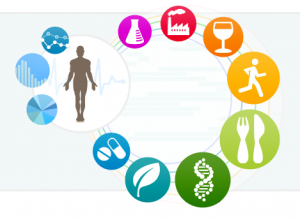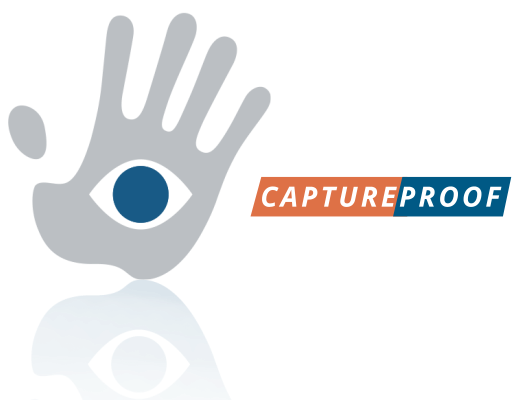CaptureProof is!
“Healthcare technology is hot stuff, with startups and investors from Silicon Valley to the Charles River chasing after the next paradigm-shifting blockbuster innovation. Each passing quarter sees an ever-increasing tally of eager rounds of funding.
In the first three quarters of 2013, health IT venture capital leapt steadily from $493 million to $623 million to $737 million, according to Mercom Capital Group. By Q1 2014, it was up to $858 million.
In Q2, VC funding for digital health passed $1 billion for the first time ever: $1.8 billion worth of deals.
“Funding into the healthcare IT sector continues at an astonishing pace,” said Mercom CEO Raj Prabhu in a press statement in April.
It’s all very exciting. But are all of these new companies developing technology that will truly help transform care delivery, or are too many of them making apps that just chip away at the edges of the more essential and systemic challenges faced by healthcare?
No question, consumer-facing technologies are attracting a ton of investor attention, and have for some time. As Prabhu told Healthcare IT News in 2013, “consumer-focused technology and applications are a driver. The investment community is recognizing and seizing on the opportunity.”
But that doesn’t necessarily mean that companies getting the biggest checks are those that are “addressing the right challenge,” he said.
As investor Stephen Bloch, MD, general partner at Canaan Partners, noted in that same article, while “the consumer side of healthcare is super important,” he puts his money with companies that address more fundamental changes being accelerated by the Affordable Care Act and other reforms.
“The entire healthcare ecosystem is thinking about how to be more efficient,” said Bloch. It’s technologies that address those needs that are most intriguing, rather than “stuff that is very wellness-focused, based on personal health or diet have different apps to track your health behaviors,” he said.
Still, it often seems it’s exactly those types of technologies that are getting the most attention. That stands to reason, said Bloch. After all, healthcare is complicated and can be intimidating. Consumer apps are much more approachable and understandable. Many investors “tend to gravitate toward things they know.”
But that doesn’t necessarily mean those products are addressing the right challenges. And one wonders just how many of these fresh startups will still be around and making a difference in five years’ time.
As Joseph Volpe, managing director of Merck’s Global Health Innovation Fund, told Healthcare IT News earlier this year: “If you want to be successful, and not be a flash in the pan … you’d better have something that cost-reduces, is efficiency-ready, answers some type of mandated need or helps the reimbursement curve.”
On Twitter, Palo Alto, Calif.-based Palav Sharda, MD, calls himself “health IT’s resident skeptic.” With years of experience working in various sub sectors of the industry (EHRs, HIE, analytics), he’s now got his own consulting firm, Multiplyd, which focuses on what he calls “medical-grade startups.”
Writing not long ago on the social media Q&A site Quora, Sharda answered one user’s interesting question – “If your goal is healthcare entrepreneurship, is getting an MD worth the effort?” – with a thoughtful response.
“Unquestionably,” he wrote. “Med school gave me the basic insight without which it would have been impossible to focus on the right things to solve in healthcare.”
He then offered a list of recent technologies aimed at the problems that “young, tech-savvy geeks think are worth solving in healthcare.” These include a platform that enables patients to ask anonymous questions of providers, “wearables that make wellness feel cool,” and yet another app designed to predict ovulation cycles.
These are hardly the most pressing problem areas of an industry crying out for change.
“Don’t get me wrong, I admire the entrepreneurial spirit,” Sharda wrote. “My issue is that without actual healthcare experience, all this fantastic talent and passion surge goes to the less important problem spots of a troubled industry.”
With so many very real problems, healthcare is way too often “infantile” in its technology development, he wrote. Instead, he’d rather see more startups “reinventing what really are problematic aspects of healthcare.”
From improving EHRs – not only with vastly-improved user interfaces but the ability to deal with vast amounts of “omics” data that will soon be the norm – to developing better clinical decision support tools and “email”-like personal health records, Sharda sees so many areas that are ripe for innovation while so many talented technologists chase smaller-bore problems, he wrote: There is “too much noise, misconception, misalignment” in the healthcare startup space.
But Daniel Kraft, MD — see his profile in this month’s Healthcare IT News cover story, “The Crazy Ones” — has a slightly different take.
Kraft, an inventor and entrepreneur, chair the medicine track at Singularity University and executive director of Exponential Medicine, thinks consumer-facing developments can actually reflect back to improve clinical processes in profound ways.
Wearables such as Fitbit and Jawbone and Nike+ FuelBand have spurred millions of users to intently track their footsteps taken, calories burned, sleep hours logged and more. This data accumulation is all the rage, but the trends of “life-logging” and “the quantified self” are already starting to wear thin as clichés.
Still, “I like to say that we’re moving from quantified self to quantified health,” Kraft says. “In the very near future your clinician will be prescribing you apps and devices – sometimes those devices will be disappearing into mobile phones – that will hold the patient accountable, as well as provide really smart information that can be useful.”
In other words: Innovations are being made on the consumer side that could be brought to bear in a big way on clinical practice. As wearable device proliferate, the hope is that they’ll have a feedback loop back to the provider that paves the way toward better care outcomes.
Sure, the average family nowadays “might only have a digital thermometer at home, maybe a scale,” says Kraft, but there’s a “huge opportunity” for data from more advanced mobile devices to be leveraged in a clinical endeavor.
Look at readmissions for congestive heart failure, for instance. “There are several companies now that, because of the incentives – do not readmit in a month or you won’t get paid – are starting to leverage sensors and data networks, with the analytics on top of that,” he says.
Those are the innovations that get the balance right: tailored to the consumer, but clinically and financially significant.
“We end up saving lives and money, and improving outcomes,” says Kraft.”
Originally published in Healthcare IT News by Mike Milliard

“…developing technology that will truly help transform care delivery”
With so many health apps and wearable devices, how does the consumer, or the Clinician, know whether something not only worth their time, and more importantly, worth their health? CaptureProof wants to give both Patients and Doctors a tool that helps to improve healthcare outcomes by letting the Patient show-and-tell and the Doctor see-and-know.
CaptureProof has developed a revolutionary technology that empowers the user to monitor and track their health not simply through a quantified self, but through a visual quantified self – letting the Patient and their care provider to see their progress over time.

CaptureProof has real Doctors in both a clinical and research setting, in real time, using CaptureProof’s HIPAA compliant app to more accurately triage and provide better care for their Patients.
Our technology is relevant, it’s cutting edge, and it’s clinically significant. Start using CaptureProof today.
#Healthcare #HealthTech #CaptureProof #SEEandKNOW #SHOWandTELL #Startups #HealthcareITNews

